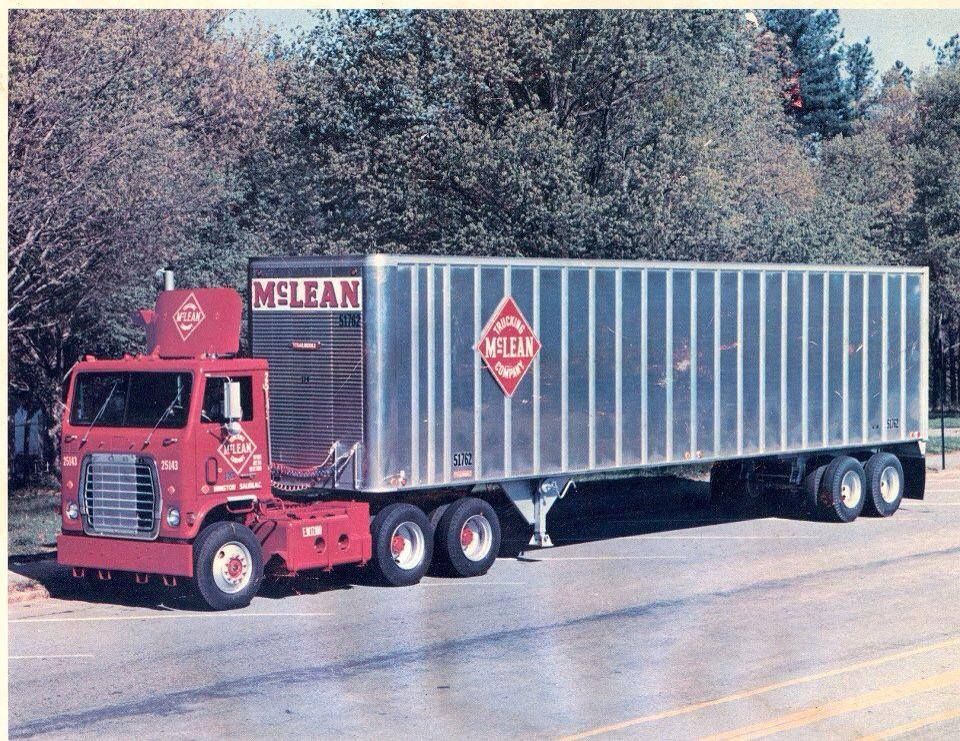Have you ever had a great idea while sitting in traffic?
Malcolm McLean did one day back in 1937. A North Carolina truck driver, McLean was sitting in his truck, once again waiting in a lonnnnng line most of the day to deliver his load of cotton to a New Jersey pier.
It suddenly occurred to him while he waited – wouldn’t it be great if my trailer could just be picked up and placed right onto the cargo ship? It could be so simple! Create a container that could be quickly lifted off the truck and onto the boat. The truckers would be back on the road sooner, and the ships would be on their way that much faster. No muss, no fuss, everybody wins. He retrofitted a tanker ship and launched his idea: the rectangular big box container.

Nowadays, the site of trucks with these types of detachable boxes is commonplace. They are so common, in fact, that people use surplus shipping containers for storage, shelters, emergency supply distribution centers, and more.
But back then, in 1937?
Nobody – and I mean NOBODY – liked it.
Why? Because the darn things didn’t fit the ships. More than that, the darn things didn’t fit the current paradigm for how the business got done.
Simplicity can be deceptive. In the case of McLean’s shipping containers, the idea was simple: create a container that could be quickly lifted off the truck and onto the ship. The truckers would be back on the road sooner, and the vessels would be on their way that much faster. No muss, no fuss, everybody wins.
In reality, ship owners tried to integrate the new container into their usual way of working without changing their infrastructure, processes, or routines. To maximize the value and usefulness of the new container approach, ship owners would need rectangular-shaped cargo holds rather than the existing pointed ship-shaped ones that left a lot of unused space. And who on earth was going to pay for that?! Come to think of it, why should the ship owners pack goods in a second box (the shipping container) and hunt for their containers at the port, let alone figure out how these rectangular containers would fit their ships?!
The shipping community responded to McLean with a big no thanks!
But those ship owners were missing the bigger picture.
They viewed the introduction of the big box container as a change to how they did business. McLean saw his big boxes as a transformation of how business could be done.
That’s the power of innovation we’re all looking for in business, right? Something that transforms how we work for the better. Yet that level of transformation through innovation requires commitment. It presents risks and costs that businesses may be unwilling to embrace.
Adopting McLean’s big boxes called for a complete rework of the existing shipping paradigm. To use the bix boxes, the ship design would need to change. The truck design would need to be modified. Pier staff would need training and new equipment. Goods manufacturers would need to rethink how they packaged their goods so they could optimize interior container space. It wasn’t until McLean aligned every part of the delivery chain – not just ship owners but the whole trade – that the container’s full potential and value were realized.
Is everything now happy in shipping land? Heck no.
These shipping containers have presented other problems, particularly in recent years. Consumer demand for more, more, more products has led to cargo ships of monstrous size in attempts to reduce fuel costs. Cargo ships tip over, spilling their containers and contents into our oceans. In 2021, a container ship ran aground in the Suez Canal, blocking the passageway and bringing international trade to a standstill. And don’t get me started on their environmental impact!
Just because we implement a great idea now doesn’t mean it will be a great idea forever.
As creators, change makers, and creative leaders, we are obligated to steward and evolve our solutions.
I embrace a view of creativity as experience, a principled engagement with the familiar in unfamiliar ways. When what once was novel becomes routine, such as McLean’s shipping container, that is the time to look again with fresh eyes at what was transformed and the after-effects of such transformations. Because there is always an after-effect. An unintended consequence. An unforeseen outcome. Just waiting for you to notice it and have a great idea. Hopefully, in less traffic, though!

